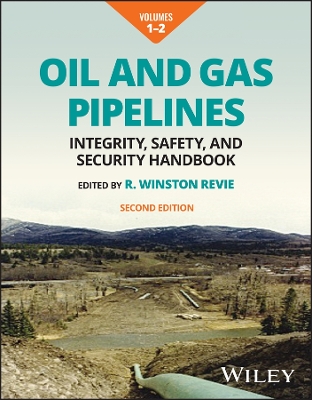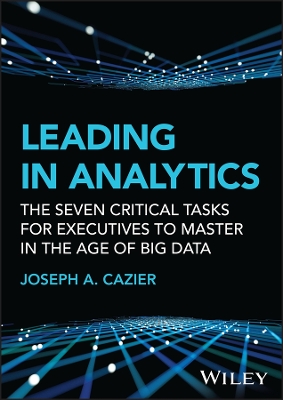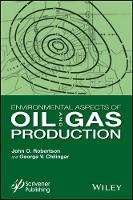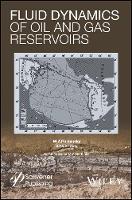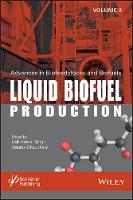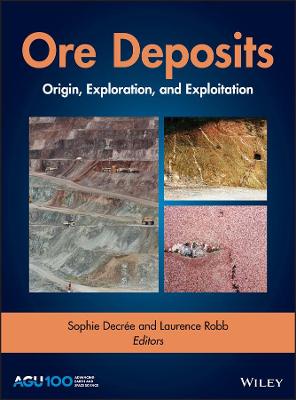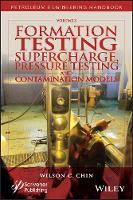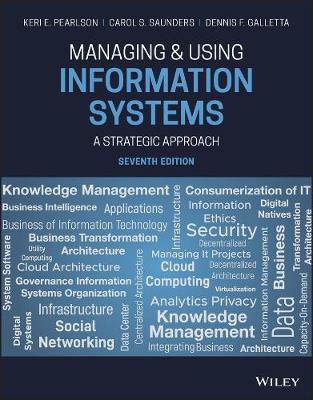Enhance Oil and Gas Exploration with Data-Driven Geophysical and Petrophysical Models
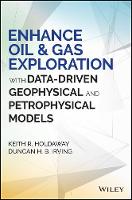 -15%
portes grátis
-15%
portes grátis
Enhance Oil and Gas Exploration with Data-Driven Geophysical and Petrophysical Models
Holdaway, Keith R.; Irving, Duncan H. B.
John Wiley & Sons Inc
11/2017
368
Dura
Inglês
9781119215103
15 a 20 dias
574
Preface xxi
Acknowledgments xxiii
Chapter 1 Introduction to Data-Driven Concepts 1
Introduction 2
Current Approaches 2
Is There a Crisis in Geophysical and Petrophysical Analysis? 3
Applying an Analytical Approach 4
What Are Analytics and Data Science? 5
Meanwhile, Back in the Oil Industry 8
How Do I Do Analytics and Data Science? 10
What Are the Constituent Parts of an Upstream Data Science Team? 13
A Data-Driven Study Timeline 15
What Is Data Engineering? 18
A Workflow for Getting Started 19
Is It Induction or Deduction? 30
References 32
Chapter 2 Data-Driven Analytical Methods Used in E&P 34
Introduction 35
Spatial Datasets 36
Temporal Datasets 37
Soft Computing Techniques 39
Data Mining Nomenclature 40
Decision Trees 43
Rules-Based Methods 44
Regression 45
Classification Tasks 45
Ensemble Methodology 48
Partial Least Squares 50
Traditional Neural Networks: The Details 51
Simple Neural Networks 54
Random Forests 59
Gradient Boosting 60
Gradient Descent 60
Factorized Machine Learning 62
Evolutionary Computing and Genetic Algorithms 62
Artificial Intelligence: Machine and Deep Learning 64
References 65
Chapter 3 Advanced Geophysical and Petrophysical Methodologies 68
Introduction 69
Advanced Geophysical Methodologies 69
How Many Clusters? 70
Case Study: North Sea Mature Reservoir Synopsis 72
Case Study: Working with Passive Seismic Data 74
Advanced Petrophysical Methodologies 78
Well Logging and Petrophysical Data Types 78
Data Collection and Data Quality 82
What Does Well Logging Data Tell Us? 84
Stratigraphic Information 86
Integration with Stratigraphic Data 87
Extracting Useful Information from Well Reports 89
Integration with Other Well Information 90
Integration with Other Technical Domains at the Well Level 90
Fundamental Insights 92
Feature Engineering in Well Logs 95
Toward Machine Learning 98
Use Cases 98
Concluding Remarks 99
References 99
Chapter 4 Continuous Monitoring 102
Introduction 103
Continuous Monitoring in the Reservoir 104
Machine Learning Techniques for Temporal Data 105
Spatiotemporal Perspectives 106
Time Series Analysis 107
Advanced Time Series Prediction 108
Production Gap Analysis 112
Digital Signal Processing Theory 117
Hydraulic Fracture Monitoring and Mapping 117
Completions Evaluation 118
Reservoir Monitoring: Real-Time Data Quality 119
Distributed Acoustic Sensing 122
Distributed Temperature Sensing 123
Case Study: Time Series to Optimize Hydraulic Fracture Strategy 129
Reservoir Characterization and Tukey Diagrams 131
References 138
Chapter 5 Seismic Reservoir Characterization 140
Introduction 141
Seismic Reservoir Characterization: Key Parameters 141
Principal Component Analysis 146
Self-Organizing Maps 146
Modular Artificial Neural Networks 147
Wavelet Analysis 148
Wavelet Scalograms 157
Spectral Decomposition 159
First Arrivals 160
Noise Suppression 161
References 171
Chapter 6 Seismic Attribute Analysis 174
Introduction 175
Types of Seismic Attributes 176
Seismic Attribute Workflows 180
SEMMA Process 181
Seismic Facies Classification 183
Seismic Facies Dataset 188
Seismic Facies Study: Preprocessing 189
Hierarchical Clustering 190
k-means Clustering 193
Self-Organizing Maps (SOMs) 194
Normal Mixtures 195
Latent Class Analysis 196
Principal Component Analysis (PCA) 198
Statistical Assessment 200
References 204
Chapter 7 Geostatistics: Integrating Seismic and Petrophysical Data 206
Introduction 207
Data Description 208
Interpretation 210
Estimation 210
The Covariance and the Variogram 211
Case Study: Spatially Predicted Model of Anisotropic Permeability 214
What Is Anisotropy? 214
Analysis with Surface Trend Removal 215
Kriging and Co-kriging 224
Geostatistical Inversion 229
Geophysical Attribute: Acoustic Impedance 230
Petrophysical Properties: Density and Lithology 230
Knowledge Synthesis: Bayesian Maximum Entropy (BME) 231
References 237
Chapter 8 Artificial Intelligence: Machine and Deep Learning 240
Introduction 241
Data Management 243
Machine Learning Methodologies 243
Supervised Learning 244
Unsupervised Learning 245
Semi-Supervised Learning 245
Deep Learning Techniques 247
Semi-Supervised Learning 249
Supervised Learning 250
Unsupervised Learning 250
Deep Neural Network Architectures 251
Deep Forward Neural Network 251
Convolutional Deep Neural Network 253
Recurrent Deep Neural Network 260
Stacked Denoising Autoencoder 262
Seismic Feature Identification Workflow 268
Efficient Pattern Recognition Approach 268
Methods and Technologies: Decomposing Images into Patches 270
Representing Patches with a Dictionary 271
Stacked Autoencoder 272
References 274
Chapter 9 Case Studies: Deep Learning in E&P 276
Introduction 277
Reservoir Characterization 277
Case Study: Seismic Profile Analysis 280
Supervised and Unsupervised Experiments 280
Unsupervised Results 282
Case Study: Estimated Ultimate Recovery 288
Deep Learning for Time Series Modeling 289
Scaling Issues with Large Datasets 292
Conclusions 292
Case Study: Deep Learning Applied to Well Data 293
Introduction 293
Restricted Boltzmann Machines 294
Mathematics 297
Case Study: Geophysical Feature Extraction: Deep Neural Networks 298
CDNN Layer Development 299
Case Study: Well Log Data-Driven Evaluation for Petrophysical Insights 302
Case Study: Functional Data Analysis in Reservoir Management 306
References 312
Glossary 314
About the Authors 320
Index 323
Preface xxi
Acknowledgments xxiii
Chapter 1 Introduction to Data-Driven Concepts 1
Introduction 2
Current Approaches 2
Is There a Crisis in Geophysical and Petrophysical Analysis? 3
Applying an Analytical Approach 4
What Are Analytics and Data Science? 5
Meanwhile, Back in the Oil Industry 8
How Do I Do Analytics and Data Science? 10
What Are the Constituent Parts of an Upstream Data Science Team? 13
A Data-Driven Study Timeline 15
What Is Data Engineering? 18
A Workflow for Getting Started 19
Is It Induction or Deduction? 30
References 32
Chapter 2 Data-Driven Analytical Methods Used in E&P 34
Introduction 35
Spatial Datasets 36
Temporal Datasets 37
Soft Computing Techniques 39
Data Mining Nomenclature 40
Decision Trees 43
Rules-Based Methods 44
Regression 45
Classification Tasks 45
Ensemble Methodology 48
Partial Least Squares 50
Traditional Neural Networks: The Details 51
Simple Neural Networks 54
Random Forests 59
Gradient Boosting 60
Gradient Descent 60
Factorized Machine Learning 62
Evolutionary Computing and Genetic Algorithms 62
Artificial Intelligence: Machine and Deep Learning 64
References 65
Chapter 3 Advanced Geophysical and Petrophysical Methodologies 68
Introduction 69
Advanced Geophysical Methodologies 69
How Many Clusters? 70
Case Study: North Sea Mature Reservoir Synopsis 72
Case Study: Working with Passive Seismic Data 74
Advanced Petrophysical Methodologies 78
Well Logging and Petrophysical Data Types 78
Data Collection and Data Quality 82
What Does Well Logging Data Tell Us? 84
Stratigraphic Information 86
Integration with Stratigraphic Data 87
Extracting Useful Information from Well Reports 89
Integration with Other Well Information 90
Integration with Other Technical Domains at the Well Level 90
Fundamental Insights 92
Feature Engineering in Well Logs 95
Toward Machine Learning 98
Use Cases 98
Concluding Remarks 99
References 99
Chapter 4 Continuous Monitoring 102
Introduction 103
Continuous Monitoring in the Reservoir 104
Machine Learning Techniques for Temporal Data 105
Spatiotemporal Perspectives 106
Time Series Analysis 107
Advanced Time Series Prediction 108
Production Gap Analysis 112
Digital Signal Processing Theory 117
Hydraulic Fracture Monitoring and Mapping 117
Completions Evaluation 118
Reservoir Monitoring: Real-Time Data Quality 119
Distributed Acoustic Sensing 122
Distributed Temperature Sensing 123
Case Study: Time Series to Optimize Hydraulic Fracture Strategy 129
Reservoir Characterization and Tukey Diagrams 131
References 138
Chapter 5 Seismic Reservoir Characterization 140
Introduction 141
Seismic Reservoir Characterization: Key Parameters 141
Principal Component Analysis 146
Self-Organizing Maps 146
Modular Artificial Neural Networks 147
Wavelet Analysis 148
Wavelet Scalograms 157
Spectral Decomposition 159
First Arrivals 160
Noise Suppression 161
References 171
Chapter 6 Seismic Attribute Analysis 174
Introduction 175
Types of Seismic Attributes 176
Seismic Attribute Workflows 180
SEMMA Process 181
Seismic Facies Classification 183
Seismic Facies Dataset 188
Seismic Facies Study: Preprocessing 189
Hierarchical Clustering 190
k-means Clustering 193
Self-Organizing Maps (SOMs) 194
Normal Mixtures 195
Latent Class Analysis 196
Principal Component Analysis (PCA) 198
Statistical Assessment 200
References 204
Chapter 7 Geostatistics: Integrating Seismic and Petrophysical Data 206
Introduction 207
Data Description 208
Interpretation 210
Estimation 210
The Covariance and the Variogram 211
Case Study: Spatially Predicted Model of Anisotropic Permeability 214
What Is Anisotropy? 214
Analysis with Surface Trend Removal 215
Kriging and Co-kriging 224
Geostatistical Inversion 229
Geophysical Attribute: Acoustic Impedance 230
Petrophysical Properties: Density and Lithology 230
Knowledge Synthesis: Bayesian Maximum Entropy (BME) 231
References 237
Chapter 8 Artificial Intelligence: Machine and Deep Learning 240
Introduction 241
Data Management 243
Machine Learning Methodologies 243
Supervised Learning 244
Unsupervised Learning 245
Semi-Supervised Learning 245
Deep Learning Techniques 247
Semi-Supervised Learning 249
Supervised Learning 250
Unsupervised Learning 250
Deep Neural Network Architectures 251
Deep Forward Neural Network 251
Convolutional Deep Neural Network 253
Recurrent Deep Neural Network 260
Stacked Denoising Autoencoder 262
Seismic Feature Identification Workflow 268
Efficient Pattern Recognition Approach 268
Methods and Technologies: Decomposing Images into Patches 270
Representing Patches with a Dictionary 271
Stacked Autoencoder 272
References 274
Chapter 9 Case Studies: Deep Learning in E&P 276
Introduction 277
Reservoir Characterization 277
Case Study: Seismic Profile Analysis 280
Supervised and Unsupervised Experiments 280
Unsupervised Results 282
Case Study: Estimated Ultimate Recovery 288
Deep Learning for Time Series Modeling 289
Scaling Issues with Large Datasets 292
Conclusions 292
Case Study: Deep Learning Applied to Well Data 293
Introduction 293
Restricted Boltzmann Machines 294
Mathematics 297
Case Study: Geophysical Feature Extraction: Deep Neural Networks 298
CDNN Layer Development 299
Case Study: Well Log Data-Driven Evaluation for Petrophysical Insights 302
Case Study: Functional Data Analysis in Reservoir Management 306
References 312
Glossary 314
About the Authors 320
Index 323




